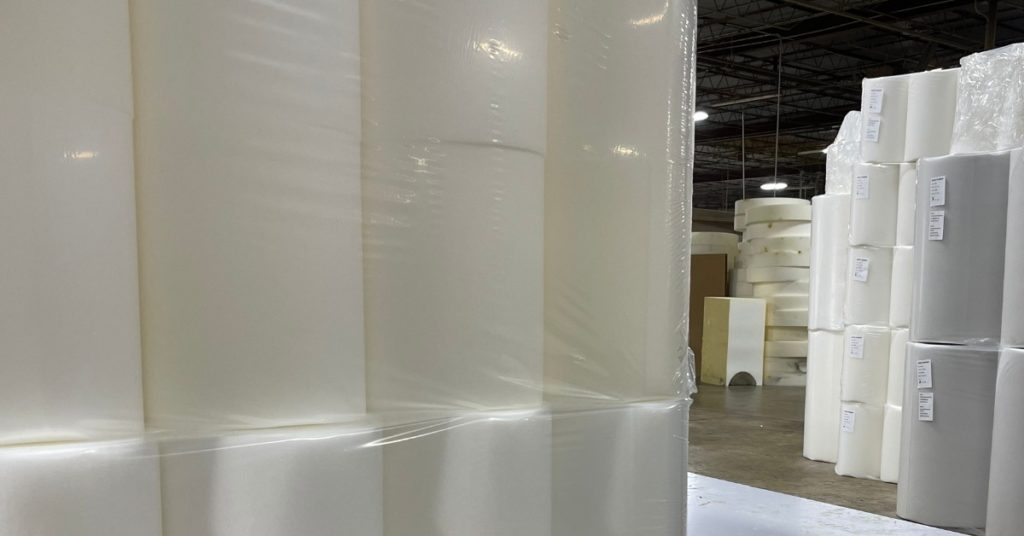Polyurethanes are some of the most versatile and valuable polymers in use today. They exist in many different forms, and their uses are vast. Polymers are synthetic materials made by joining long chains of complex molecules called monomers. Mostly known to us as plastics, polymers are an integral part of modern industrialization. Polyurethane is regularly used in the packaging industry and many others, from transportation, construction, furnishing, fashion, and even healthcare.
There are quite a few types of polyurethane: flexible urethane rubber, rigid polyisocyanurate foam board insulation, and elastomeric polyurethane adhesives, and coatings that are used in the transportation industry. In addition to this, there are many other chemical compounds with similar properties that fall under the classification “polymers”. But how did we get to all these uses?
A Brief History
Polyurethanes can be traced back to the 1930s when German chemist – Fredrich Bayer developed the earliest prototype. The chemical reaction that produces polyurethane was patented in 1933, but not until 1941 did scientists at du Pont discover that this new material could polymerize into something more useful. This discovery opened up many possibilities, such as using flexible urethane rubber for insulation against heat and cold air.
During WWII, polyurethanes were used as protective coatings on airplanes. By 1953 it was being used commercially as polyurethane foam and mostly used for insulation until cheaper and more flexible foams were introduced in 1956. By the late 50s, polyurethanes were being used as adhesives and moldable polyurethane was being developed.
1957 saw the development of polyurethane foams in Europe. The rigid polyisocyanurate foam insulation board was invented by Saint-Gobain, a leading French glass manufacturer at the time. This was an important discovery because it meant that people could insulate their homes and businesses more effectively against heat loss/gain while only using half as much material.
In 1962 flexible urethane rubber had been developed enough to begin being used for things other than air conditioning systems such as shoe soles instead of natural rubber which would decompose with age or get brittle from repeated flexing. In 1968, UCB Corporation began producing neoprene – a synthetic version of latex rubber made from petroleum.
Today, polyurethane development has been refined to create valuable materials, including polyurethane coatings, spandex fibers, thermoplastics, and much more. Here at Sterling, we use polyurethane, polyethylene, and Expandable Polystyrene foam for objects such as furniture, bedding, construction, and electronics for industries such as the military, oil and gas, medical and pharmaceutical, and automotive.
While polyurethane has many applications and uses four of the most common include: thermal insulation, coating, furnishings, and rubber.
1) Thermal Insulation
A major use for polyurethanes is in the construction industry. We find insulation boards made from rigid polyisocyanurate foams sold under the brand name ‘polyiso’ (marketed by Dow Chemical Company). Layers of low-density polyurethane insulate walls, roofs, floors, plumbing, and even pipes. This is because polyurethanes are resistant to water and chemicals, which makes them suitable for construction purposes.
2) Coating
Very thin layers of various types of polyurethane are used for protective coatings. These polyurethanes are made by using isocyanates (chemicals used in making flexible urethane rubber and rigid insulation boards). The commercial market uses them to protect metals, fabrics, flooring materials like tiles or wood floors. They can also be found as thin layers on the outside of buildings that protect against weather damage. Polyurethanes are often applied to other surfaces because they offer a protective layer that has water-resistant properties – these coatings sometimes have a high gloss finish for aesthetic purposes, but some may even include color pigments depending on their use. One example of this type of application is paint that has polyurethene binders like interior latex paint.
3) Furnishings
For furniture, polyurethane is used to make furniture more comfortable and durable. You may be sitting on a couch that is made with polyurethane right now as you are reading this! One popular application is in upholstery for sofas, love seats and couches. Polyurethane has the ability to absorb kinetic energy by deforming when pressure is applied – this can be seen as a ‘give’ or ‘springiness’, which makes it more comfortable than other types of furniture. It also doesn’t get hot under your skin like some fabrics do making polyurethane ideal for weather conditions where people will spend extended periods outside on long summer days (like sitting poolside).
4) Rubber
Polyurethane is one of the most popular uses for the soles of most shoes. It is used in many types of athletic shoes because it provides superior flexibility and shock absorption while being less expensive than natural rubber. Polyurethane can be found on the soles of running sneakers, biking booties, snow boots which are designed to keep feet dry during cold weather or wet conditions, high heel shoes where polyurethane has replaced leather as an alternative choice that doesn’t get stiff when exposed to water – this makes them more comfortable for long periods of wear without having to break them in first.
It is also used to make automotive parts such as tires and bumpers. Heavy-duty tires are sometimes lined with a layer of polyurethane foam to protect against potential damage from road hazards.
Polyurethane has many uses in our society and daily lives. It is typically found in packaging materials like egg cartons, peanuts and bubble wrap because it can be easily molded into any shape needed. It has many uses including protecting our food with plastic bags, bottles and containers; but did you know there are even more ways it can help us? There are numerous benefits when using this material when transporting hazardous substances due to its excellent resistance to chemicals. The discovery of polyurethane made an enormous impact on our society. As we discover more uses and applications for this material, it will continue having a positive effect on our lives.


